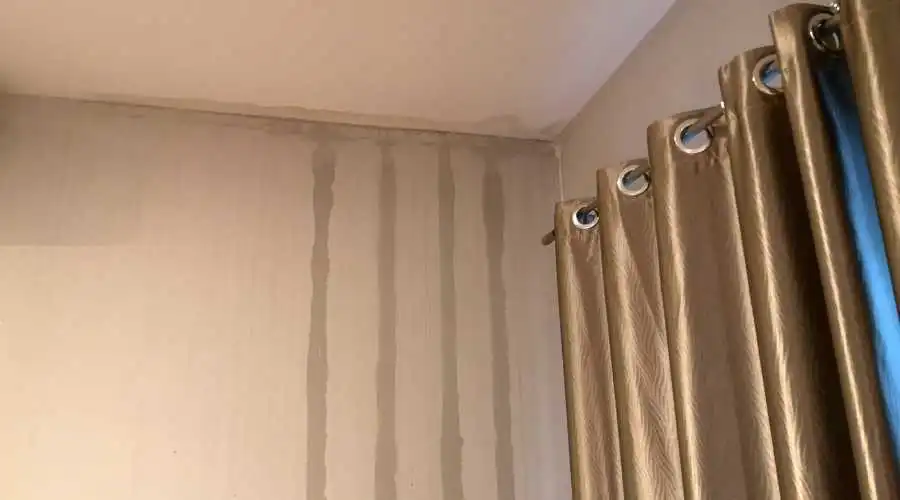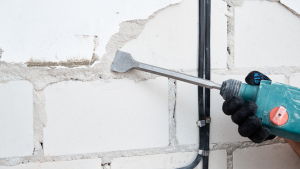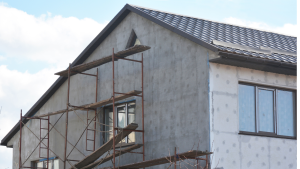Water infiltration is one of every stucco home owner’s worst nightmare. In this article, we will delve into the intricacies of how water infiltrates stucco walls, shedding light on a critical aspect of stucco maintenance. This comprehensive article will empower you with a deeper understanding of this phenomenon, equipping you with the knowledge to safeguard your stucco surfaces effectively.
The Challenge of Stucco Water Infiltration
Stucco siding, known for its aesthetic appeal, can face significant challenges when it comes to water infiltration. Proper installation is essential to prevent water from seeping into stucco walls and causing potential damage.
Addressing stucco water infiltration promptly is crucial, as it can lead to mold growth and other water-related issues. Understanding the mechanisms behind stucco water infiltration is the initial step in both prevention and mitigation.
Unraveling the Paths of Water Infiltration
- Direct Absorption: Stucco is designed to be a resilient and impermeable siding option. However, various conditions can compromise its waterproof properties, leading to direct water infiltration. Factors such as consistent moisture contact or improper sealing can undermine the stucco’s ability to resist water. This can result in wicking, where water penetrates deeply into the stucco.
- Cracks and Openings: Stucco remains effective against water infiltration as long as it remains solid and intact. Cracks that develop over time can provide entry points for water, allowing it to reach the interior. Swelling and shifting caused by water intrusion can exacerbate these cracks, leading to further water penetration.
- Flashing Installation Issues: Flashing and moisture barriers play a critical role in preventing water infiltration at joints and intersections. Improper installation of flashing can create vulnerabilities, allowing water to breach the stucco’s defenses. Even a small amount of water ingress can lead to substantial damage over time.
Contributing Factors to Water Intrusion
- Proximity of Plants and Planters: The presence of plants, particularly when placed too close to exterior walls, can exacerbate water infiltration. Soil in contact with stucco can transfer moisture inside, potentially leading to long-term damage. Planters, flowerbeds, and garden boxes against the side of your home can create excessively moist environments detrimental to stucco maintenance.
- Impact of Light Fixtures: Exterior light fixtures, commonly found on stucco walls, can inadvertently contribute to water intrusion. Improperly outfitted fixtures without adequate moisture barriers can allow rainwater to infiltrate the interior walls. This issue extends to various outdoor installations, such as taps, decks, and patios connected to the house.
- Ivy and Plant Growth: While ivy and other growth may enhance aesthetics, they can pose risks to stucco siding. Ivy’s rootlets penetrate the stucco surface, permitting moisture intrusion. Moss, with its deep-rooted nature, can cause even more damage. Both these growths can allow moisture to infiltrate and spread through the walls over time.
The Domino Effect: Consequences of Water Infiltration
- Mold and Mildew Growth: Excess moisture within stucco walls creates an ideal environment for mold and mildew growth. These fungal organisms not only compromise indoor air quality but can also lead to health issues for occupants.
- Structural Damage: Water infiltrating stucco walls can reach the underlying structural components, including wooden framing. Over time, this can lead to wood rot, compromising the structural integrity of the building.
- Stucco Deterioration: Continuous water infiltration weakens stucco’s adhesion and integrity. It can lead to cracking, peeling, and delamination of stucco layers, resulting in an unsightly appearance and reduced performance.
Effective Water Prevention Measures
If you suspect stucco water infiltration in your home, taking prompt action is vital. By addressing water infiltration effectively, we ensure the resilience and durability of your stucco exterior.
- Regular Inspections: Frequent visual inspections of your stucco walls are crucial. Look for cracks, gaps, and signs of water staining. Address any issues promptly to prevent further water infiltration.
- Quality Sealing and Flashing: Ensure proper sealing and flashing around penetrations. Invest in high-quality sealants and flashing materials, and enlist professional expertise for installation.
- Proper Drainage: Maintain effective drainage systems, including gutters and downspouts. Direct water away from stucco walls to minimize water contact.
- Repairs and Restoration: If water infiltration has already caused damage, opt for professional stucco repair and restoration. Expert technicians can identify underlying issues and implement effective solutions.
Prioritize Stucco Water Prevention
Water infiltration poses a significant threat to stucco walls, potentially leading to extensive damage and costly repairs. Awareness of the various pathways of water infiltration, coupled with proactive prevention measures, is paramount. And we at Jersey City Stucco Contractors stands as your partner in maintaining a robust and visually appealing stucco exterior. Contact us today to safeguard your investment and ensure the longevity of your stucco siding. Protect your home from water infiltration and enjoy the lasting beauty and structural integrity of your stucco surfaces.




